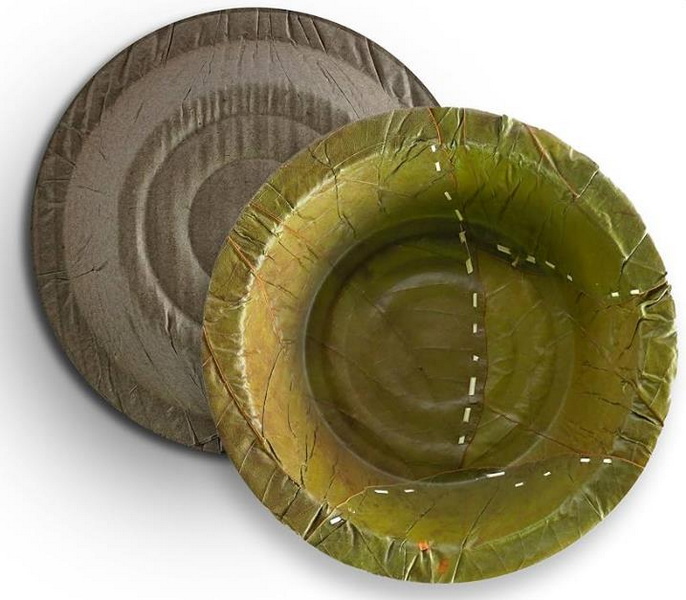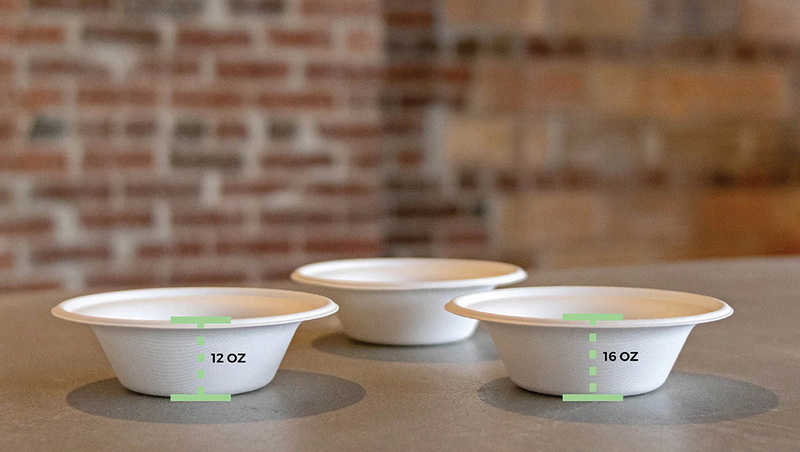
Content Menu
● The Problem with Traditional Disposable Tableware
● The Rise of Eco-Friendly Alternatives
>> Key Features of Eco-Friendly Disposable Tableware:
● Popular Eco-Friendly Disposable Bowl and Plate Brands
● How Eco-Friendly Disposable Bowls and Plates Reduce Waste
>> 1. Biodegradability and Compostability
>> 2. Resource Conservation
>> 3. Reduced Carbon Footprint
>> 4. Encouraging Sustainable Practices
● Benefits for Different Sectors
>> Food Businesses
>> Event Planning
>> Home Use
● Challenges and Considerations
● The Future of Eco-Friendly Disposable Tableware
● Conclusion
● FAQ
>> 1. What materials are commonly used to make eco-friendly disposable bowls and plates?
>> 2. How long do eco-friendly disposable bowls and plates take to decompose?
>> 3. Are eco-friendly disposable bowls and plates more expensive than traditional options?
>> 4. Can eco-friendly disposable bowls and plates be used for hot foods and liquids?
>> 5. How can I ensure proper disposal of eco-friendly disposable bowls and plates?
● Citations:
In today's environmentally conscious world, the shift towards sustainable practices has become increasingly important. One area where significant progress can be made is in the use of eco-friendly disposable bowls and plates. These products offer a promising solution to reduce waste and minimize environmental impact, especially for large events, food businesses, and everyday use. Let's explore how these innovative alternatives are making a difference and helping to create a more sustainable future.

The Problem with Traditional Disposable Tableware
Traditional disposable tableware, often made from plastic or Styrofoam, has long been a convenient option for various occasions. However, these materials pose significant environmental challenges. They contribute to pollution, take hundreds of years to decompose, and often end up in landfills or oceans, harming wildlife and ecosystems[1].
The Rise of Eco-Friendly Alternatives
In response to these environmental concerns, eco-friendly disposable bowls and plates have emerged as a sustainable alternative. These products are designed to minimize environmental impact while still providing the convenience of disposable tableware[1].
Key Features of Eco-Friendly Disposable Tableware:
1. Made from renewable resources
2. Biodegradable or compostable
3. Free from harmful chemicals
4. Durable and suitable for various food types
5. Often stylish and aesthetically pleasing
Popular Eco-Friendly Disposable Bowl and Plate Brands
Several brands have taken the lead in producing high-quality, eco-friendly disposable tableware. Here are some notable examples:
1. World Centric®: Offers a wide range of compostable products made from renewable materials[2].
2. Eco-Products®: Provides innovative, environmentally friendly disposable options for various needs[2].
3. StalkMarket®: Specializes in compostable tableware made from plant-based materials[2].
4. EarthChoice®: Offers a diverse selection of eco-friendly disposable products[2].
5. EQUO: Produces 100% plastic-free, compostable tableware made from natural, renewable resources[4].
6. Greenovation: Creates innovative dinnerware from naturally fallen palm leaves, offering a truly sustainable alternative[5].

How Eco-Friendly Disposable Bowls and Plates Reduce Waste
Eco-friendly disposable bowls and plates contribute to waste reduction in several ways:
1. Biodegradability and Compostability
Unlike traditional plastic or Styrofoam products, eco-friendly alternatives are designed to break down naturally. Many of these products are certified compostable, meaning they can decompose in industrial composting facilities within a few months[1][4]. This significantly reduces the amount of waste that ends up in landfills or pollutes natural environments.
2. Resource Conservation
Eco-friendly disposable tableware is often made from renewable resources or byproducts of other industries. For example, some products are created from sugarcane bagasse, bamboo, or palm leaves[1][5]. By utilizing these materials, manufacturers reduce the demand for new raw materials and help conserve natural resources.
3. Reduced Carbon Footprint
The production of eco-friendly disposable bowls and plates often requires less energy and generates fewer greenhouse gas emissions compared to traditional plastic products. This lower carbon footprint contributes to overall waste reduction in terms of environmental impact[4].
4. Encouraging Sustainable Practices
By choosing eco-friendly disposable tableware, consumers and businesses alike are supporting and encouraging sustainable practices. This shift in consumer behavior can lead to broader adoption of environmentally friendly products and practices, ultimately reducing waste on a larger scale[1][4].
Benefits for Different Sectors
Food Businesses
For food businesses, adopting eco-friendly disposable bowls and plates can have numerous benefits:
1. Meeting customer demand for sustainable options
2. Complying with environmental regulations
3. Enhancing brand image and reputation
4. Reducing waste management costs
Event Planning
Event planners can significantly reduce the environmental impact of large gatherings by opting for eco-friendly disposable tableware:
1. Simplifying clean-up processes
2. Offering a stylish and sustainable option for guests
3. Aligning with eco-conscious event themes
4. Reducing the overall carbon footprint of the event[4]
Home Use
Individuals can also contribute to waste reduction by choosing eco-friendly disposable options for home use:
1. Convenient for picnics and outdoor activities
2. Ideal for parties and gatherings
3. Reducing household waste
4. Setting a positive example for family and friends
Challenges and Considerations
While eco-friendly disposable bowls and plates offer numerous benefits, there are some challenges to consider:
1. Cost: Eco-friendly options may be more expensive than traditional disposables, which can be a barrier for some consumers and businesses.
2. Availability: Although becoming more common, eco-friendly disposables may not be as readily available as traditional options in all areas.
3. Proper Disposal: To fully realize the benefits of compostable products, they need to be disposed of correctly, which may require access to industrial composting facilities.
4. Consumer Education: Educating consumers about the benefits and proper use of eco-friendly disposables is crucial for their effective adoption and impact.
The Future of Eco-Friendly Disposable Tableware
As technology advances and consumer awareness grows, the future of eco-friendly disposable bowls and plates looks promising. Innovations in materials and manufacturing processes are likely to lead to even more sustainable and cost-effective options. Additionally, as more regions implement regulations to reduce single-use plastics, the demand for eco-friendly alternatives is expected to increase[1][4].
Conclusion
Eco-friendly disposable bowls and plates play a crucial role in reducing waste and promoting sustainability. By choosing these alternatives over traditional disposables, individuals, businesses, and event organizers can significantly decrease their environmental impact. As the market for eco-friendly disposable tableware continues to grow, we can expect to see more innovative solutions that balance convenience with environmental responsibility.
The shift towards eco-friendly disposable bowls and plates is more than just a trend; it's a necessary step towards a more sustainable future. By making conscious choices in our everyday lives, we can collectively contribute to reducing waste and preserving our planet for future generations.

FAQ
1. What materials are commonly used to make eco-friendly disposable bowls and plates?
Eco-friendly disposable bowls and plates are typically made from renewable resources such as bamboo, sugarcane bagasse, palm leaves, and cornstarch. These materials are chosen for their biodegradability and minimal environmental impact[1][5].
2. How long do eco-friendly disposable bowls and plates take to decompose?
The decomposition time for eco-friendly disposable tableware varies depending on the material and disposal conditions. In industrial composting facilities, many products can break down within 4-6 months. However, in home composting or natural environments, it may take longer[4][8].
3. Are eco-friendly disposable bowls and plates more expensive than traditional options?
Generally, eco-friendly disposable bowls and plates tend to be more expensive than traditional plastic or Styrofoam options. However, prices are becoming more competitive as demand increases and production scales up. Many consumers and businesses find the environmental benefits worth the additional cost[4].
4. Can eco-friendly disposable bowls and plates be used for hot foods and liquids?
Yes, many eco-friendly disposable bowls and plates are designed to handle hot foods and liquids. For example, some products are microwave-safe and can withstand temperatures up to 200°F (93°C). However, it's always best to check the specific product specifications[4][5].
5. How can I ensure proper disposal of eco-friendly disposable bowls and plates?
To ensure proper disposal, check the product's composting instructions. Many eco-friendly disposables require industrial composting facilities for optimal decomposition. If such facilities are not available in your area, consider using reusable options or contacting local waste management authorities for guidance on proper disposal methods[1][4].
Citations:
[1] https://www.peelware.com/post/eco-friendly-dinner-plates-peelable-paper-plates
[2] https://greenpaperproducts.com/collections/compostable-brands
[3] https://anyflip.com/ljupa/ogcb/basic/51-100
[4] https://shopequo.com/blogs/blog/eco-friendly-disposable-tableware-for-large-events-what-you-need-to-know
[5] https://ecopalmleaves.com
[6] https://www.sohu.com/a/732353962_121124334
[7] https://greenpaperproducts.com/blog/the-importance-of-eco-friendly-disposable-tableware-for-food-businesses
[8] https://www.bambuhome.com/collections/compostable-plates

















